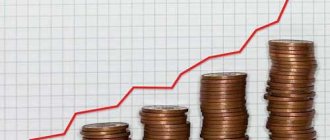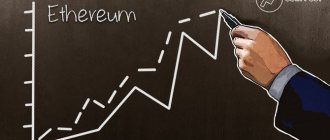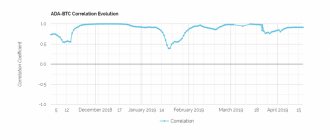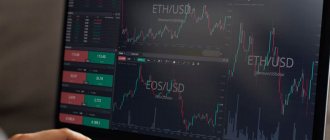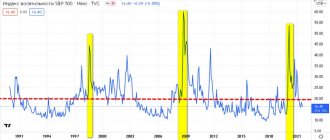Modern history includes more than 20 crises that were of global proportions. The negative impact was exerted on almost all spheres of human life and was of a spontaneous nature. According to experts, the global crisis is difficult to prevent and predict, which is why its consequences are so disastrous for the economies of many countries.
If we talk about the reasons that can provoke such an imbalance, then it is worth noting the most popular:
- socio-political situation in the world and in each individual country;
- irrational policies and ineffective financial management;
- excessive competition, which creates many problems;
- natural disasters and cataclysms;
- wars;
- instability of the banking system of the leading world powers.
The global economic crisis does not pass without leaving a trace and always entails negative consequences. It can provoke an imbalance between supply and demand, lead to a significant decrease in production, and affect the price level. During this transition period, there is an increase in unemployment and poverty.
World economic crisis of 1929
In particular, this was the global economic crisis of 1929, when the value of shares fell overnight, business activity decreased, which entailed consequences in the form of unemployment, bankruptcy of financial and manufacturing companies, inflation, and the collapse of the agricultural system. The exact causes of the “Great Depression” are not named, but they mainly boil down to the following – the creation of a “stock exchange bubble”, monetarism, lack of money supply, and the growth of margin loans. The United States and a number of other countries in North and South America were able to get out of this state only by 1932, when measures were introduced aimed at changing the social, political and banking spheres.
Crisis by country
The year 2008 affected all states in the world in one way or another. A similar picture was observed in almost all states. Many representatives of the world community began to actively borrow money on foreign markets. This resulted in a deterioration in the quality of life, an increase in inflation and unemployment. A large number of large organizations have gone bankrupt or seriously reduced production rates and have not yet returned to pre-crisis levels.
USA
The global economic downturn of 2008 began in the United States. At this moment, there was a credit and mortgage crisis, and in early September problems appeared among banking organizations. Banks began to carry out various measures to ensure liquidity of the entire system. In this regard, almost five dozen organizations suffered heavy losses and were closed. The value of securities has almost halved.
US bank failures
The autumn of the same year was marked by the fall of organizations working in the mortgage industry. The state has allocated additional funds to support them. Similar events were carried out in relation to other organizations in this area. The crisis has affected all spheres of life, which is why inflation and unemployment rates have increased sharply.
Russia
In the Russian Federation, problems began for private businesses due to a large number of loans in a situation where there was an outflow of foreign capital from the country and the number of international economic relations decreased. The first clear sign of recession was the beginning of the stock market crash at the end of May, the second wave occurred in July of the same year.
The armed conflict in South Ossetia that occurred between the troops of the Russian Federation and Georgia had a significant impact. An impressive reserve of hard currency (gold), a small amount of government debt and large volumes of corporate loans allowed the situation to be slightly rectified.
Global economic crisis of 2008
The global economic crisis of 2008 is said to be comparable in scale to the Great Depression, when for the first time in the history of modern mankind such an indicator as GDP showed negative dynamics. World trade has collapsed, the “dominance” of the dollar has been revised, and there has been a significant increase in the price of oil and gold. During this period, people began to talk about income inequality, widespread unemployment and poverty. The guidance for overcoming the crisis was an international declaration, which contained advice on revising the activities of financial institutions, reorganizing market relations, and adjusting social policy.
A little theory
As experience shows, a period of decline is always followed by a period of growth.
In financial theory, this phenomenon is called economic cycles, that is, regular fluctuations in economic conditions, which are characterized by ups and downs of economic activity. As a rule, despite their regularity, cycles do not have a specific time frame (say, every 5 or 10 years) and occur periodically, and they can be both a consequence of objective factors (deterministic point of view) and spontaneous, unpredictable events (stochastic point of view ). Regardless of the approach, it is customary to distinguish four phases in economic cycles:
- The rise, or revival, occurs after reaching the “bottom”, a period when production and employment begin to grow, innovations are gradually introduced and demand deferred during the crisis is realized.
- Peak - characterized by the lowest possible level of unemployment and the highest possible level of economic activity.
- A recession, or recession, is when production volumes decline, economic and investment activity declines, and the unemployment rate begins to rise.
- The bottom, or depression, is the “lowest point” to which the economy could reach; generally does not last long, but there may be exceptions (the Great Depression, despite periodic minor fluctuations, lasted 10 years).
These phases can be traced using the example of crises of previous years and even centuries.
Consequences of the global economic crisis
Of course, the phenomena under consideration could not pass without results. Anti-crisis measures aimed at economic recovery made it possible to gradually solve accumulated problems and stabilize the situation on the market. As a rule, the consequences of the global economic crisis are:
- reduction in prices, inflation, stabilization of demand and revision of salaries relative to existing expenses and the consumer basket;
- revision of loan rates, attraction of foreign capital to create a “cash cushion”;
- saturation of banks with foreign currency;
- solving issues of education, medicine, attracting the unemployed to develop new territories and regions.
Asian crisis 1997 - 1998
After World War II, another factor in the weakening of Asia’s role in financial matters was the Asian crisis of 1997-1998. The source is the departure of foreign investors as a result of the devaluation of Asian currencies, as well as an increased indicator of the deficit balance of payments.
Results:
- reduction in global GDP by 2 trillion. US dollars.
Causes of the global economic crisis
As stated above, the causes of crisis phenomena can be:
- difficult socio-political situation;
- inept financial and economic management;
- oversaturation of markets with assumptions (competition);
- natural phenomena (cataclysms, wars, catastrophes);
- risky decisions regarding the development of banks and financial institutions.
The internal and external causes of the global economic crisis do not develop immediately, but accumulate, introducing the state into a state of depression, recession, and destabilization. Therefore, when the first signs of these phenomena appear, it is important to reconsider political decisions and quickly respond to a changing economy.
The Great Depression
The Great Depression of the 30s of the 20th century in the United States occurred because, according to Nobel Prize laureate in economics Milton Friedman, the American Federal Reserve System was doing God knows what. When the situation finally got out of control, the state, represented by the Federal Reserve and the US government, blamed everything on the free market and entrepreneurs.
The Great Depression is perhaps the most famous economic crisis in the history of the planet. The recession in the United States dragged on for as long as 10 years. At first, it was believed that speculators, capitalists, entrepreneurs and a “too free market” were to blame for the massive unemployment and high American inflation shortly before World War II. The credit for overcoming the effects of the depression is often attributed to the American government, the Federal Reserve and Roosevelt's New Deal (which took seven years to implement).
Another famous American economist, representative of the Austrian Economic School (AES) Murray Rothbard also believes that the Great Depression is not to blame for business and the free market, but for the Fed, which “ put out the fire with kerosene ” during inflation.
“The Great Depression was the result of a failure of government regulation. Failure of monetary policy. The Fed knew perfectly well what needed to be done, but did nothing.”
Milton Friedman, representative of the Chicago School of Economics
Why are economists sure that the cause of the crisis of the 1930s was a failure not of the market, but of the state?
The problem of the global economic crisis
The causes of crisis phenomena listed above are recognized as a consequence of economic development. Experts are confident that where there is stability, an imbalance inevitably appears. In capitalist times it was caused by underproduction, in modern times by overproduction. The imbalance arises against the background of inept management of available resources, the desire to get more without improving or adjusting the process. States strive for dominance and do not pay attention to the accumulated tasks. This is the main problem of the global economic crisis or imbalance.
Banking Panic of 1907
In 1907, the British Central Bank unexpectedly raised the discount rate. Great Britain needed fresh cash flows to increase its gold and foreign exchange reserves. The tempting offer worked and caused an influx of external capital: many investors left US banks and invested their funds in the British economy.
As a result, the New York stock exchange collapsed, the country's population succumbed to panic and rushed to withdraw their savings from US banks. Some financial institutions were forced to declare bankruptcy. Similar phenomena were also observed in France and Italy, but to a much lesser extent than in the United States.
Conditions of the global economic crisis
What should organizations and states do in general if a crisis cannot be avoided? It is important to understand and rethink its terms. As a rule, people perceive the situation negatively and are unwilling to accept it and benefit from it. But the conditions of the global economic crisis can be reduced not only to the collapse of production, the banking system, social imbalance, but also to benefits:
- revision of prices for oil, assets, gold and currency, resulting in a slowdown in inflation;
- reduction in supplies of imported goods, the opportunity to increase the competitiveness of their products;
- increasing the productivity and desire of employees to work so as not to lose their jobs.
What should an investor do during a financial crisis?
An ordinary person (investor) during an economic crisis needs to competently maneuver his capital so as not to lose his money. What options are there?
Any crisis is a unique opportunity to invest cheaply in assets. Everything is very cheap. The main thing is to have money to buy.
Investing in a company's shares is a good idea, but only when it becomes clear that the market has already broken the bottom. Buying shares that have fallen by 10% will be extremely risky, since during the development of negative forecasts and statistics they may fall more than once by 10%, 30%, etc.
As legendary trader Larry Williams said:
There is no need to try to catch a flying dagger from above. Wait until it sticks into the base and stops shaking.
You can't predict the bottom of the market. Even the most advanced analysts and gurus are unable to do this.
If you are just a beginning investor, then you can act on the principle of not entering with all your capital at once. For example, buy first for 15%, then for another 15%. And after that you will still have 70% of the money left. It will be very profitable to buy at the bottom if the market continues to fall further.
There is no point in investing your money in real estate, since it obviously will not rise in price. It is better then to wait 1-2 years and then buy.
The best option is to purchase short-term OFZ bonds (up to 2 years). They will make a profit, and money will always be at hand.
- Protective assets during a crisis;
What not to do during a crisis:
- Buy unnecessary things;
- Buy gold, jewelry;
- Buy foreign currency with all your money;
- Sell securities cheaply;
Consider alternative investment options. For example, it could be a cryptocurrency. The truth is far from certain that it will not collapse along with the entire financial market. But it's worth considering this option.
- Trading on the cryptocurrency exchange;
- Top cryptocurrency exchanges;
- The best cryptocurrency exchangers;
History of world economic crises
The listed conditions, parameters and causes of imbalance can be traced throughout all stages of human development. Thus, the history of world economic crises began in 1857, when the stock market collapsed in the United States and the ruin of many railway companies occurred. In Europe, the collapse of stock markets due to "tight lending" in Latin America and the depreciation of real estate in Austria and Germany occurred in 1873. The World War in 1914 also served as a reason for the development of crisis phenomena. The “Great Depression” and the modern crisis of 2008 have already been discussed earlier.
Stock market crash of 1873 ("Panic of 1873")
Start
After the victory in the Franco-Prussian War, as a result of the peace treaty, Germany received from France an indemnity for a huge, by the standards of that time, amount of 5 billion francs in gold, which currently equates to just over 300 billion dollars (the amount was ¼ of France’s GDP).
The German states were united into the German Empire, the solid foundation of which was the funds paid by the French. As a result, free capital fell on the stock market of Western Europe, which had to be profitably applied and distributed. In Germany and Austria-Hungary, land began to be actively purchased and houses were built for commercial and residential purposes, while large-scale railroad construction was underway in the United States. Huge amounts of money circulated in these two areas—real estate and railroads—thus creating an economic (speculative) bubble.
A crisis
Vienna became the epicenter of speculation, and after this became obvious, there was an immediate reaction from society. Investors, including foreign ones, were afraid for their money, a process of general panic began, and in just a couple of days the largest Vienna Stock Exchange was empty. Construction companies began to go bankrupt, and the banks that were still in the game sharply increased interest rates on loans, which finally led to a sharp decline in the economy. Following Vienna, there was a stock market crash in Germany, and then in the United States.
The Austro-German crisis dashed all America's ambitious plans for the construction of railways, into which investors from all over the world had invested billions of dollars. US banks and construction companies had high hopes for funding from Germany, but rising interest rates led to the repatriation of funds. The return of funds from the investee country back to their homeland. America lost its funding, and the railways already built did not fully live up to expectations. The banks that provided credit and loans for the construction of railways were the first to go bankrupt, followed by the industrial sector of the economy, especially metallurgical plants.
The crisis has begun. Exchanges were closing, companies in Western Europe and the United States declared bankruptcy, bonds were depreciating, and the countries' economies were rapidly collapsing. The crisis dragged on for a quarter of the 19th century and was called the “Long Depression.”
results
Despite the difficult economic situation, we still managed to get out of the crisis. The heaviest blow came to the United States, but by 1890 America had surpassed Great Britain in terms of GDP due to the return to the gold standard, a monetary system in which the main unit of calculation is the nth amount of gold. as well as the entry into the era of monopolies and active colonization of Africa and Asia. Ultimately, stagnation and falling prices led to increased production. Low prices stimulated its growth, and production absorbed the excess money supply. The economy began to recover.
Types of economic crises
So, there are several reasons for imbalance. Their variety and focus allows us to distinguish the following types of economic crises:
- cyclical, which arises against the background of overproduction, rising costs, and an outdated structure of the production cycle;
- intermediate, which is considered local and affects only certain areas. It appears due to contradictions in the banking and economic spheres;
- sectoral, which affects individual industries, for example, oil or gold and foreign exchange;
- structural, based only on technological imbalance, lack of industry or production development.
Business cycle phases
Any of these types of economic crisis occurs after a violation of equilibrium, that is, the balance between consumer demand and production. In this case, a predictable cyclicity is observed, when a period of growth is replaced by a decline or lack of development. These are the so-called phases of the economic cycle, which include:
- recession, which is characterized by overproduction, accumulation of warehouse balances, falling demand for capital and investment, rising unemployment;
- depression, in which there is an increase in unemployment, an opportunity arises to accumulate capital for further development, and a process of reformatting or restructuring of the economy occurs;
- a recovery that brings with it a reduction in the number of unemployed, an increase in demand for consumer goods and investment;
- boom, when there is a glut of production capacity again, the so-called inflation gap.
Consequences
The economic crisis is multifaceted and spares no one. Let us list its inevitable consequences:
- reduction in wages;
- decline in the solvency of the population;
- rising unemployment;
- reduction in the range of goods and the emergence of shortages;
- depreciation of money;
- rising social tensions and cultural decline;
- corruption.
A crisis is a spontaneous phenomenon. The question of whether it can be prevented is rather rhetorical. But there is a chance to find ways out of the situation in a timely manner that will allow us to overcome the collapse with minimal impact. And many today are worried about what awaits us after the coronavirus pandemic. Perhaps this will be the largest crisis on a global scale?
Ways to overcome global financial crises
In order to stabilize the situation in the country, it is necessary to choose short-term or long-term ways to overcome the global financial crises, which include the following measures:
- agricultural development;
- increasing humanitarian assistance and adjusting social policy;
- solving the food supply problem;
- creation and increase of gold and foreign exchange reserves;
- expansion of cultivated areas and attracting people to public works;
- revision of pricing policy.
All this will ultimately improve the well-being of the population and bring the country into the recovery phase for further development.
First world crisis 1900 - 1903
Its consequences reverberated for a long time. And not only in the socio-economic sphere, but also in the political sphere.
As a result of the crisis, monopolization processes intensified, and backward (in technical terms) enterprises suffered ruin. In some countries, this crisis became the impetus for popular uprisings and discontent (for example, in the Russian Empire - the First Russian Revolution).
Results:
- salary reduction by 25-30%;
- drop in energy prices by 10-15%.


